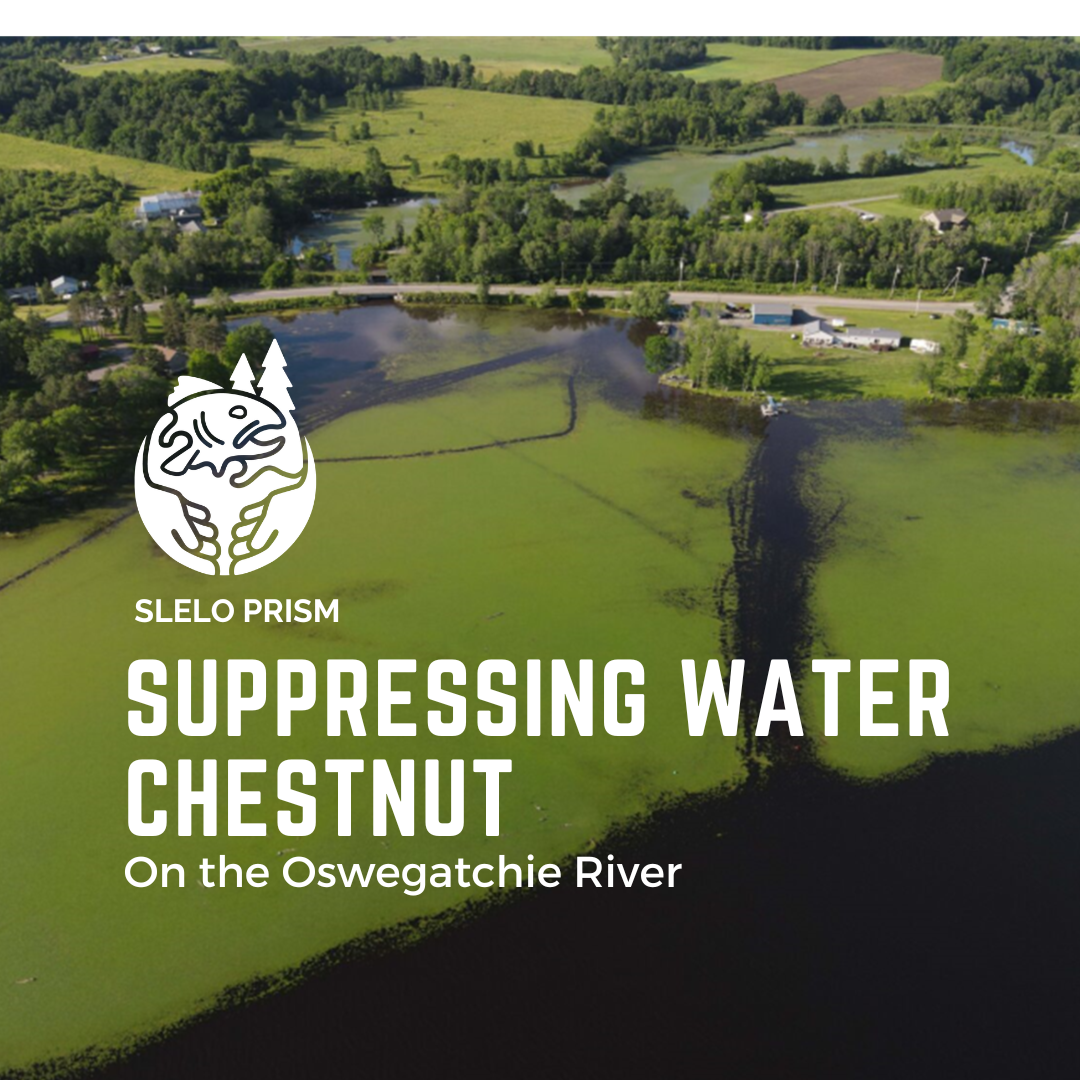This article was featured in the 2025 Winter Newsletter by Brad Baldwin– St. Lawrence University.
St. Lawrence University received funding from the NYS DEC, as well as a grant from NYPA’s SLRREF program, to support a multi-year suppression effort for a large water chestnut population (40+ acres) on the Oswegatchie River near the Village of Heuvelton, NY. In the summer of 2024, it was estimated that 30 million water chestnut plants were removed from this population using mechanical and manual methods. Over the next few years, there are plans to continue mechanical and manual removal efforts on the River. These efforts aim to aid the reestablishment of native vegetation and reduce the spread of this invasive species downstream into Black Lake and the St. Lawrence River—two ecologically and economically important waterbodies.
In addition to removal efforts, surveys were conducted in the summer of 2024 by project staff on Black Lake. There are plans underway to work with the Black Lake Association to continue managing populations near the lake to remove any regrowth in 2025 and increase surveys of additional Lake shorelines. Likewise, initial surveys along the St. Lawrence River (from Ogdensburg to Massena) found only one small chestnut population in the mouth of Tibbetts Creek, near Ogdensburg. Efforts to hand-pull these plants with local community members are ongoing. Similar surveys and removals will be crucial in 2025, since the record summer floods in 2024 may have swept a considerable number of seeds/nuts downstream from the Heuvelton water chestnut population.
The suitability of fish habitat in nearshore waters dominated by water chestnut and by native vegetation were also explored. Similar amounts of potential fish forage (zooplankton, insects, and snails, etc.) and recorded juvenile fish were found in each habitat, suggesting that fish may use both site types as nursery areas. However, water quality measurements were generally worse in water chestnut dominate sites, showing lower dissolved oxygen and pH than seen in native plant dominate sites, especially from midnight to dawn.
Continued suppression of water chestnut at Heuvelton should help native plant recovery, which in turn will support native fish and invertebrate populations. There is hope that this work will reduce continued spread of water chestnut in these important waterbodies. More information about the project can be found on the St. Lawrence University website.
Please fill out the form below to be added to our listserv and receive our seasonal newsletter, event invitations and other announcements.


